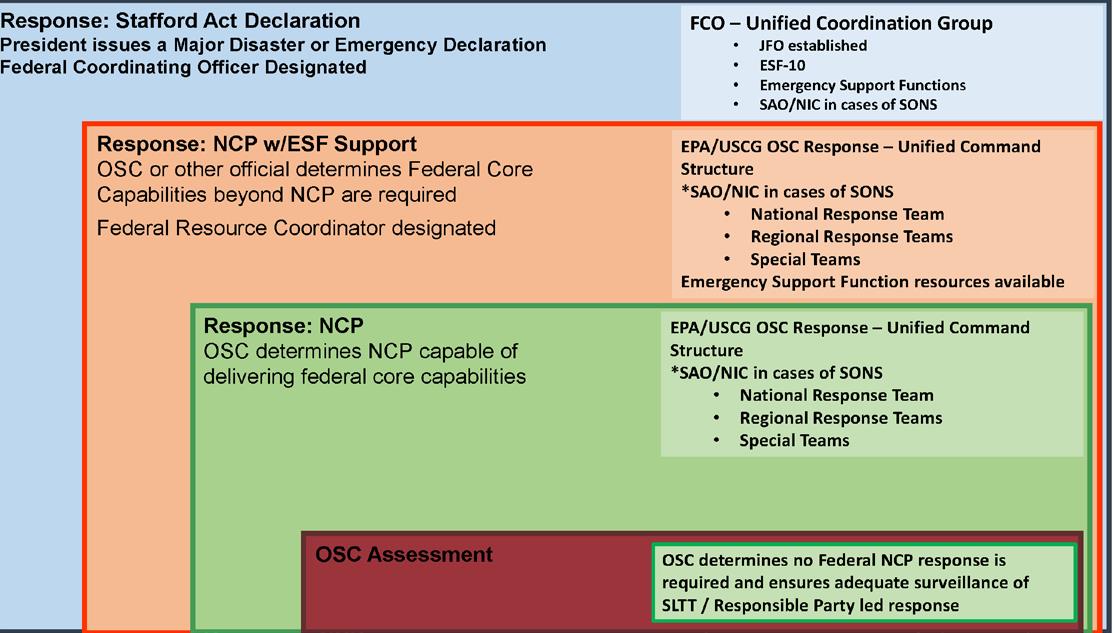EPA and the National Response Framework
The National Response Framework is a guide to how the Nation responds to all types of disasters and emergencies. It is built on scalable, flexible, and adaptable concepts identified in the National Incident Management System to align key roles and responsibilities across the Nation. The NRF describes specific authorities and best practices for managing incidents that range from the serious but purely local to large-scale terrorist attacks or catastrophic natural disasters. The NRF provides coordinating mechanisms to bring in additional agencies and components as they are needed.
Emergency Support Function Annexes
The NRF's Emergency Support Function Annexes group capabilities and resources into functions most likely needed during an incident. A large-scale natural disaster or significant terrorist incident can require the activation of all ESFs. A localized flood or tornado might only require activation of a few ESFs.
Each ESF has one or two coordinating federal agencies that are in charge of orchestrating federal support and managing staff and resources for that functional area, and additional agencies that have supporting roles.
Emergency Support Function 10 (ESF # 10) – Oil and Hazardous Materials Response Annex
EPA and the Department of Homeland Security/U.S. Coast Guard are the primary agencies for overseeing Emergency Support Function 10 – Oil and Hazardous Materials Response Annex (14 pp, 108.54 K, About PDF) under the National Response Framework. ESF #10 provides a coordinated federal response to actual or potential oil and hazardous materials incidents. Response under ESF #10 occurs when there has been a Presidential Disaster Declaration under the Stafford Act or there is a need to support a response under the National Oil and Hazardous Substances Contingency Plan (NCP), 40 CFR Part 300, with additional resources.
EPA is a supporting agency for:
- ESF#3 Public Works and Engineering
- ESF#4 Firefighting
- ESF#5 Emergency Management
- ESF#8 Public Health and Medical Services
- ESF#11 Agriculture and Natural Resources
- ESF#13 Public Safety and Security
- ESF#15 External Affairs
The graphic below shows how EPA would fold into a Stafford Act response. The incident may begin with a National Contingency Plan response, and due to the nature or duration of the response, become a Stafford Act response.

Reference: Federal Interagency Operational Plan – Response and Recovery, Oil/Chemical Incident Annex.
SLTT- State. Local, Tribal and Trust Territories
SAO – Senior Agency Official
NIC – National Incident Commander
SONS – Spill of National Significance
FCO – Federal Coordinating Officer
